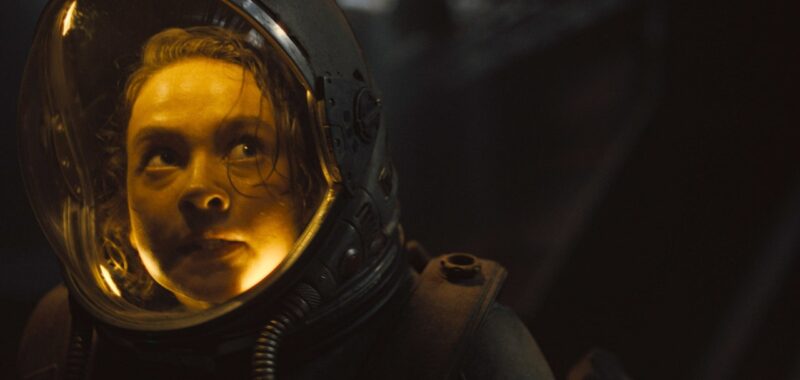It’s a haunted house in space. That was the designation that no less than Gene Siskel and Roger Ebert applied to Ridley Scott’s Alien back in 1979. While Ebert did later select Alien for his Great Movies series, he didn’t back away from that first description: “At its most fundamental level,” he begins, “Alien is a movie about things that can jump out of the dark and kill you.” So it makes sense that for the latest Alien movie, producers have turned to Fede Álvarez, whose career has consisted largely of perverse variations on the haunted house. In his Evil Dead remake, young people convening in a woodsy cabin for an intervention are haunted by demonic forces. In Don’t Breathe, young people who break into a blind man’s home in search of a cash score are bedeviled by that man, who turns out to be much more formidable than they expect. And in Álvarez’s Alien: Romulus, young people break into an abandoned spacecraft, hoping to raid it for useful gear, and, well, perhaps you can guess what’s waiting there for them.
What they’re seeking, though, is means of escape from their desolate, daylight-free lives of indentured servitude on a vividly rendered mining colony, whose oppressive industrial tones recall David Fincher’s Alien 3. Rain (Cailee Spaeny) is so desperate to run away with Tyler (Archie Renaux) that she hasn’t quite worked out how to handle Andy (David Jonsson), the glitchy, sweet-natured “synthetic human” she refers to as her brother. Tyler is an old model, repurposed with the directive to protect his adopted sister, but the planet where they’re hoping to settle doesn’t look kindly upon anything made by the Weyland-Yutani Corporation, this universe’s perpetual Big Bad. Instead, Rain, Andy, and Tyler focus on the task at hand, alongside similarly downtrodden compatriots Kay (Isabela Merced) and Bjorn (Spike Fearn). Even more explicitly than the working-class characters from the 1979 Alien, these kids are primarily struggling against near-impossible levels of economic oppression—at least until they reach that abandoned ship, a spooky repository of the lost future they’ve been denied.
Even before the inevitable appearance of the xenomorph, the fearsome “perfect organism” with the nasty phallic helmet-head (from which emerges a second, similarly phallic mouth), the acid blood, the spindly claws, and the deadly-whip tail, what’s waiting for them looks more like a haunted house than any Alien movie since the first—maybe including the first, because that ship was in regular use when the xenomorph invaded it. There’s no (human) life in the ship that the crew explores in Alien: Romulus, and when they first arrive, its gravity generators have been shut off, lending the cavernous rooms an eerie, ghostly appearance. The production design from Naaman Marshall is rich in detail and well-integrated visual effects; floating and creeping across the big screen, these images feel as immersive as any Alien movie ever made.
Those comparisons are clearly on the filmmakers’ minds. Early promotions for Romulus stressed its timeline position (and creative inspiration) as about halfway between Alien and Aliens, which made me nervous to behold a glorified fan film, desperate to retcon or at least ignore other entries in the series. As it turns out, if you poke around enough corners of this haunted ship, you can find similarities to almost all of the past Alien movies—including direct references to Prometheus, Ridley Scott’s divisive 2012 prequel. Some have already dismissed this as empty fan service, though I’m not sure that’s precisely accurate. One character from long ago has been sorta-resurrected with questionable-taste tech that also feels thematically (if ghoulishly) appropriate, especially for a haunted-house story. But were originalist Alien fans really clamoring for more of this character, or for Prometheus references? (I was delighted, but I’m a sicko; I like all the Alien movies.)
What I think these criticisms are driving at is that Alien: Romulus turns out to be very much a sequel to other Alien movies. Say what you will about Alien 3 or Alien: Resurrection, but they did not particularly resemble their predecessors; just ask the diminished, disappointed audiences that turned up for them back in the ’90s. (Again, not me, because I am a sicko and will be rewatching all of these for decades to come.) There was no real matching up, say, the James Cameron battle royale of Aliens with the green-hued grotesquerie of Jean-Pierre Jeunet’s Alien: Resurrection, set some two centuries later, even with Sigourney Weaver serving as connective tissue. Romulus, on the other hand, feels eager to position itself, physically and temporally, in the world of the Alien series. It’s Alien as a theme-park ride—at times, maybe a whole park unto itself.

